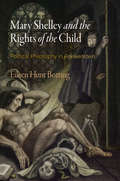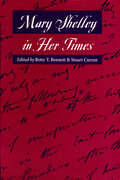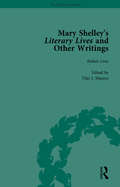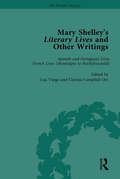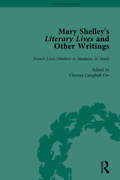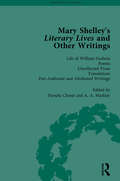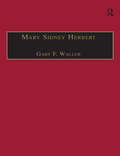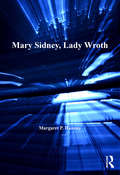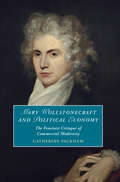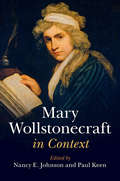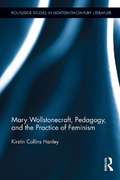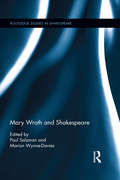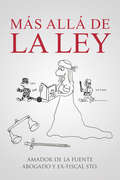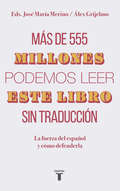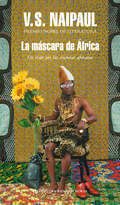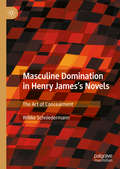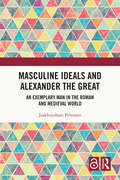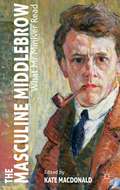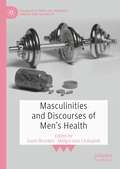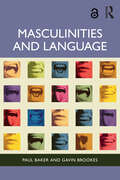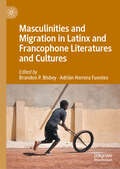- Table View
- List View
Mary Shelley and the Rights of the Child: Political Philosophy in "Frankenstein"
by Eileen Hunt BottingFrom her youth, Mary Shelley immersed herself in the social contract tradition, particularly the educational and political theories of John Locke and Jean-Jacques Rousseau, as well as the radical philosophies of her parents, the feminist Mary Wollstonecraft and the anarchist William Godwin. Against this background, Shelley wrote Frankenstein; or, the Modern Prometheus, first published in 1818. In the two centuries since, her masterpiece has been celebrated as a Gothic classic and its symbolic resonance has driven the global success of its publication, translation, and adaptation in theater, film, art, and literature. However, in Mary Shelley and the Rights of the Child, Eileen Hunt Botting argues that Frankenstein is more than an original and paradigmatic work of science fiction—it is a profound reflection on a radical moral and political question: do children have rights?Botting contends that Frankenstein invites its readers to reason through the ethical consequences of a counterfactual premise: what if a man had used science to create a human life without a woman? Immediately after the Creature's "birth," his scientist-father abandons him and the unjust and tragic consequences that follow form the basis of Frankenstein's plot. Botting finds in the novel's narrative structure a series of interconnected thought experiments that reveal how Shelley viewed Frankenstein's Creature for what he really was—a stateless orphan abandoned by family, abused by society, and ignored by law. The novel, therefore, compels readers to consider whether children have the right to the fundamental means for their development as humans—namely, rights to food, clothing, shelter, care, love, education, and community.In Botting's analysis, Frankenstein emerges as a conceptual resource for exploring the rights of children today, especially those who are disabled, stateless, or genetically modified by medical technologies such as three-parent in vitro fertilization and, perhaps in the near future, gene editing. Mary Shelley and the Rights of the Child concludes that the right to share love and community, especially with parents or fitting substitutes, belongs to all children, regardless of their genesis, membership, or social status.
Mary Shelley in Her Times
by Betty T. Bennett and Stuart CurranAuthor of six novels, five volumes of biographical lives, two travel books, and numerous short stories, essays, and reviews, Mary Shelley is largely remembered as the author of Frankenstein, as the wife of Percy Bysshe Shelley, and as the daughter of William Godwin and Mary Wollstonecraft. This collection of essays, edited by Betty T. Bennett and Stuart Curran, offers a more complete and complex picture of Mary Shelley, emphasizing the full range and significance of her writings in terms of her own era and ours. Mary Shelley in Her Times brings fresh insight to the life and work of an often neglected or misunderstood writer who, the editors remind us, spent nearly three decades at the center of England's literary world during the country's profound transition between the Romantic and Victorian eras.The essays in this volume demonstrate the importance of Mary Shelley's neglected novels, including Matilda, Valperga, The Last Man, and Falkner. Other topics include Mary Shelley's work in various literary genres, her editing of her husband's poetry and prose, her politics, and her trajectory as a female writer. This volume advances Mary Shelley studies to a new level of discourse and raises important issues for English Romanticism and women's studies.
Mary Shelley in Her Times
by Betty T. Bennett and Stuart Curran“Some of the strongest essays of recent times on Shelley’s work . . . A valuable piece of criticism.” —Byron JournalMary Shelley is largely remembered as the author of Frankenstein, as the wife of Percy Bysshe Shelley, and as the daughter of William Godwin and Mary Wollstonecraft. This collection of essays, edited by Betty T. Bennett and Stuart Curran, offers a more complete and complex picture of Mary Shelley—author of six novels, five volumes of biographical lives, two travel books, and numerous short stories, essays, and reviews—emphasizing the full range and significance of her writings in terms of her own era and ours. Mary Shelley in Her Times brings fresh insight to the life and work of an often neglected and misunderstood writer who, the editors remind us, spent nearly three decades at the center of England’s literary world during the country’s profound transition between the Romantic and Victorian eras.The essays in this volume demonstrate the importance of Mary Shelley’s neglected novels, including Matilda, Valperga, The Last Man, and Falkner. Other topics include her work in various literary genres, her editing of her husband’s poetry and prose, her politics, and her trajectory as a female writer. This volume advances Mary Shelley studies to a new level of discourse and raises important issues for English Romanticism and women’s studies.
Mary Shelley's Literary Lives and Other Writings, Volume 1
by Nora CrookThis collection covers the lyrical poetry of Mary Shelley, as well as her writings for Lardner's "Cabinet Cyclopaedia of Biography" and some other materials only recently attributed to her.
Mary Shelley's Literary Lives and Other Writings, Volume 2: Spanish And Portuguese Lives
by Lisa VargoThis collection covers the lyrical poetry of Mary Shelley, as well as her writings for Lardner's "Cabinet Cyclopaedia of Biography" and some other materials only recently attributed to her.
Mary Shelley's Literary Lives and Other Writings, Volume 3
by Nora CrookThis collection covers the lyrical poetry of Mary Shelley, as well as her writings for Lardner's "Cabinet Cyclopaedia of Biography" and some other materials only recently attributed to her.
Mary Shelley's Literary Lives and Other Writings, Volume 4
by Nora CrookThis collection covers the lyrical poetry of Mary Shelley, as well as her writings for Lardner's "Cabinet Cyclopaedia of Biography" and some other materials only recently attributed to her.
Mary Sidney Herbert: Printed Writings 1500–1640: Series 1, Part One, Volume 6 (The Early Modern Englishwoman: A Facsimile Library of Essential Works & Printed Writings, 1500-1640: Series I, Part One #Vol. 6)
by Gary F. WallerMary Sidney (1562-1620), Countess of Pembroke, was born into one of England’s most prominent literary and political families. She was fluent in at least three languages and was an accomplished translator and poet. Her two translations from the French, A Discourse of Life and Death, by Philippe de Mornay, and Antonius, a TragÅ“die, by Robert Garnier were published together in 1592 by William Ponsonby. That combined volume is reprinted here.
Mary Sidney, Lady Wroth
by Margaret P. HannayDespite her fascinating life and her importance as a writer, until now Lady Mary Wroth has never been the subject of a full-length biography. Margaret Hannay's reliance on primary sources results in some corrections, as well as additions, to our knowledge of Wroth's life, including Hannay's discovery of the career of her son William, the marriages of her daughter Katherine, her grandchildren, her last years, the date of her death, and the subsequent history of her manuscripts. This biography situates Lady Mary Wroth in her family and court context, emphasizing the growth of the writer's mind in the sections on her childhood and youth, with particular attention to her learned aunt, Mary Sidney Herbert, Countess of Pembroke, as literary mentor, and to her Continental connections, notably Louise de Coligny, Princess of Orange, and her stepson Prince Maurice. Subsequent chapters of the biography treat her experience at the court of Queen Anne, her relationships with parents and siblings, her love for her cousin William Herbert, her marriage to Robert Wroth, the birth and early death of her only legitimate child, her finances and properties, her natural children, her grandchildren, and her last years in the midst of England's civil wars. Throughout the biography attention is paid to the complex connections between Wroth's life and work. The narrative is enhanced with a chronology; family trees for the Sidneys and Wroths; a map of Essex, showing where Wroth lived; a chart of family alliances; portraits; and illustrations from her manuscripts.
Mary Wollstonecraft and Political Economy: The Feminist Critique of Commercial Modernity (Cambridge Studies in Romanticism)
by Catherine PackhamWhy was Wollstonecraft's landmark feminist work, the Vindication of the Rights of Woman, categorised as a work of political economy when it was first published? Taking this question as a starting point, Mary Wollstonecraft and Political Economy gives a compelling new account of Wollstonecraft as critic of the material, moral, social, and psychological conditions of commercial modernity. Offering thorough analysis of Wollstonecraft's major writings - including her two Vindications, her novels, her history of the French Revolution, and her travel writing - this is the only book-length study to situate Wollstonecraft in the context of the political economic thought of her time. It shows Wollstonecraft as an economic as much as a political radical, whose critique of the emerging economic orthodoxies of her time anticipates later Romantic thinkers. This title is part of the Flip it Open Programme and may also be available Open Access. Check our website Cambridge Core for details.
Mary Wollstonecraft in Context (Literature in Context)
by Nancy E. Johnson Paul KeenMary Wollstonecraft (1759–1797) was one of the most influential and controversial women of her age. No writer, except perhaps her political foe, Edmund Burke, and her fellow reformer, Thomas Paine, inspired more intense reactions. In her brief literary career before her untimely death in 1797, Wollstonecraft achieved remarkable success in an unusually wide range of genres: from education tracts and political polemics, to novels and travel writing. Just as impressive as her expansive range was the profound evolution of her thinking in the decade when she flourished as an author. In this collection of essays, leading international scholars reveal the intricate biographical, critical, cultural, and historical context crucial for understanding Mary Wollstonecraft's oeuvre. Chapters on British radicalism and conservatism, French philosophes and English Dissenters, constitutional law and domestic law, sentimental literature, eighteenth-century periodicals and more elucidate Wollstonecraft's social and political thought, historical writings, moral tales for children, and novels.
Mary Wollstonecraft, Pedagogy, and the Practice of Feminism: Mary Wollstonecraft, Pedagogy, And The Practice Of Feminism (Routledge Studies in Eighteenth-Century Literature #9)
by Kirstin HanleyThis study examines Mary Wollstonecraft—generally recognized as the founder of the early feminist movement—by shedding light on her contributions to eighteenth-century instructional literature, and feminist pedagogy in particular. While contemporary scholars have extensively theorized Wollstonecraft’s philosophical and polemic work, little attention has been given to her understanding and representation of feminist practice, most clearly exemplified in her instructional writing. This study makes a significant contribution to the fields of both eighteenth-century and Romantic Era literature by looking at how early feminism influenced didactic traditions from the late-eighteenth century to today. Hanley argues that Wollstonecraft constructs a paradigm of feminist pedagogy both in the texts’ representations of teaching and learning, and her own authorial approach in re-appropriating earlier texts and textual traditions. Wollstonecraft’s appropriations of Locke, Rousseau, and other educationists allow her to develop reading and writing pedagogies that promote critical thinking and gesture toward contemporary composition theories and practices. Hanley underscores the significance of Wollstonecraft as teacher and mentor by revisiting texts that are generally assigned a short space in the context of a larger discussion about her life and/or writing, re-presenting her works of instruction as meaningful both in their revisionist approaches to tradition and their normative didactic features.
Mary Wroth and Shakespeare (Routledge Studies in Shakespeare)
by Paul Salzman Marion Wynne-DaviesOver the last twenty five years, scholarship on Early Modern women writers has produced editions and criticisms, both on various groups and individual authors. The work on Mary Wroth has been particularly impressive at integrating her poetry, prose and drama into the canon. This in turn has led to comparative studies that link Wroth to a number of male and female writers, including of course, William Shakespeare. At the same time no single volume has attempted a comprehensive comparative analysis. This book sets out to explore the ways in which Wroth negotiated the discourses that are embedded in the Shakespearean canon in order to develop an understanding of her oeuvre based, not on influence and imitation, but on difference, originality and innovation.
Maryse Conde and the Space of Literature
by Eva Sansavior"The Guadeloupean writer and critic Maryse Conde has for the last twenty-five years divided her time between her native Guadeloupe and the United States. If the author's work has attracted much critical attention in the United States, it is the fictional works that have been the focus of this attention with these predominantly read in the light of political themes such as identity and resistance. In these intelligent and sensitive readings, Eva Sansavior argues in favour of adopting a broader thematic and generic approach to the author's work. Sansavior accounts for the multiple and oblique uses of literature in the Conde's literary and critical work tracking its complex interactions with tradition, reception, politics and autobiography and also the singular possibilities that these interactions present for re-imagining the ideas of politics, literature, identity and, ultimately, the nature of critical practice itself."
Más allá de la Ley
by Amador de la FuenteDe jueces iluminados, querulantes profesionales y justiciables insolentes: así es la justicia española. <P><P> Es una visión irónica y humanista a la vez de la práctica forense en las oficinas del registro civil, comisarías de policía y juzgados. <P>Abogados diletantes o inexpertos, justiciables y querulantes, jueces y fiscales inexpertos e iluminados, arcaicas salutaciones, grotescas injurias judiciales, escritos irascibles o insolentes, denuncias indolentes e inanes, relatos pornográficos, animales con derechos que forman parte de la vida diaria de los tribunales españoles.
Más de 555 millones podemos leer este libro sin traducción: La fuerza del español y cómo defenderla
by Álex Grijelmo José María MerinoUn poderoso manifiesto a favor del español. El momento que atraviesa la lengua española, tanto por su creciente difusión en el mundo como por la general unificación de estructuras y reglas que mantiene y por la riqueza de su vocabulario, merece un análisis desde diversas perspectivas históricas, sociales, culturales y económicas, en las que, con voluntad divulgativa, se consideren los aspectos más importantes del fenómeno.
La máscara de África: Un viaje por las creencias africanas
by V.S. NaipaulEl primer gran libro de Naipaul desde el premio Nobel, su regreso a la literatura de viajes y a África. «Para mis libros de viajes viajo alrededor de un tema. Y el tema de La máscara de África son las creencias africanas. Comienzo en Uganda, en el centro del continente, voy a Ghana y a Nigeria, a Costa de Marfil y a Gabón, y acabo en el extremo meridional del continente, en Suráfrica. Mi tema son las creencias, no la vida política o económica, y, sin embargo, en el ese extremo del continente las realidades políticas son tan abrumadoras que no pueden obviarse. Quizá un aspecto tácito de mis indagaciones fuera comprobar si existía la posibilidad de subvertir la vieja África con los métodos del mundo exterior. El tema tuvo validez hasta que llegué al sur, donde el choque entre las dos maneras de pensar y creer se volvió demasiado parcial. Los rascacielos de Johannesburgo no se erigían sobre arena. El mundo más antiguo de la magia daba sensación de fragilidad, pero al mismo tiempo poseía una cualidad de perdurabilidad. Uno podía sentir que sobreviviría a cualquier desastre. Yo esperaba que las prácticas mágicas variaran significativamente en la gran extensión de África. Pero no fue así. En todas partes, los adivinos querían "tirar los huesos" para interpretar el futuro, y la idea de la "energía", a la que se accedía mediante el sacrificio ritual de partes del cuerpo, era una constante. Ser testigo de ello, hacerse una idea de su poder, significaba retroceder hasta los inicios de todo. Llegar a esos inicios era el propósito de mi libro.» V.S. Naipaul
Masculine Domination in Henry James's Novels: The Art of Concealment
by Wibke SchniedermannThis book proposes a new interdisciplinary approach to the gendered power relations in James’s novels. Reading James’s narrative form through the lens of relational sociology, specifically Pierre Bourdieu’s concept of symbolic domination, reconciles some of the most fiercely disputed positions in James studies of the past decades. The close readings focus on three novels, The Portrait of a Lady, The Wings of the Dove, and The Golden Bowl, providing a systematic relational analysis into the specifically Jamesian method of narrating the socio-psychological, embodied responses to masculine power and oppression. James persistently narrates his characters as social agents whose perception, affects, and bodily practices are products of the social structures that they in turn continue to shape and reproduce. The chapters trace a development throughout James’s career that reflects a growing sensitivity for the concealment and attendant misrecognition of gendered domination.
Masculine Ideals and Alexander the Great: An Exemplary Man in the Roman and Medieval World
by Jaakkojuhani PeltonenFrom premodern societies onward, humans have constructed and produced images of ideal masculinity to define the roles available for boys to grow into, and images for adult men to imitate. The figure of Alexander the Great has fascinated people both within and outside academia. As a historical character, military commander, cultural figure and representative of the male gender, Alexander’s popularity is beyond dispute. Almost from the moment of his death Alexander’s deeds have had a paradigmatic aspect: for over 2300 years he has been represented as a paragon of manhood - an example to be followed by other men - and through his myth people have negotiated assumptions about masculinity. This work breaks new ground by considering the ancient and medieval reception of Alexander the Great from a gender studies perspective. It explores the masculine ideals of the Greco-Roman and medieval past through the figure of Alexander the Great, analysing the gendered views of masculinities in those periods and relates them to the ways in which Alexander’s masculinity was presented. It does this by investigating Alexander’s appearance and its relation to definitions of masculinity, the way his childhood and adulthood are presented, his martial performance and skill, proper and improper sexual behaviour, and finally through his emotions and mental attributes. Masculine Ideals and Alexander the Great will appeal to students and scholars alike as well as to those more generally interested in the portrayal of masculinity and gender, particularly in relation to Alexander the Great and his image throughout history.
The Masculine Middlebrow, 1880�1950
by Kate MacdonaldWho was the early twentieth-century masculine middlebrow reader? How did his reading choices respond to his environment? This book looks at British middlebrow writing and reading from the late Victorian period to the 1950s and examines the masculine reader and author, and how they challenged feminine middlebrow and literary modernism.
Masculine Virtue in Early Modern Spain (New Hispanisms: Cultural and Literary Studies)
by Shifra ArmonMasculine Virtue in Early Modern Spain extricates the history of masculinity in early modern Spain from the narrative of Spain’s fall from imperial power after 1640. This book culls genres as diverse as emblem books, poetry, drama, courtesy treatises and prose fiction, to restore the inception of courtiership at the Spanish Hapsburg court to the history of masculinity. Refuting the current conception that Spain’s political decline precipitated a ’crisis of masculinity’, Masculine Virtue maps changes in figurations of normative masculine conduct from 1500 to 1700. As Spain assumed the role of Europe’s first modern centralized empire, codes of masculine conduct changed to meet the demands of global rule. Viewed chronologically, Shifra Armon shows Spanish conduct literature to reveal three axes of transformation. The ideal subject (gendered male in both practice and law) became progressively more adaptable to changing circumstances, more intensely involved in currying his own public image, and more desirous of achieving renown. By bringing recent advances in gender theory to bear on normative rather than non-normative masculinities of early modern Spain, Armon is able to foreground the emergence of energizing new models of masculine virtue that continue to resonate today.
Masculinities and Discourses of Men's Health (Palgrave Studies in Language, Gender and Sexuality)
by Gavin Brookes Małgorzata ChałupnikThis book brings together a collection of case studies that explore the relationship between health and masculinity. It covers various topics related to health, such as mental health, sexual health, eating disorders and coronavirus, and offers health-based perspectives on issues such as migration and gender identity, as these relate to masculinities. In exploring these themes, this book addresses a wide range of communicative contexts, including online forums, interviews, advertising, sex education materials, migrant integration classes, and suicide notes. This book will appeal to linguists interested in health and gender (particularly masculinities), as well as scholars in fields such as psychology, media studies, cultural studies, and other humanities and social science disciplines with a focus on discourse.
Masculinities and Language
by null Paul Baker null Gavin BrookesToday, the topic of gender identity is being discussed more widely than ever before. With the rise of online misogyny and in the wake of #metoo, language around masculinity and toxic masculinity merits closer examination. Accessibly written by two leading linguists, this book provides a comprehensive treatment of the debates around language and masculinity, asking how language is used to perform masculinity and how language is used to represent men.Including examples of research from a range of international scholars, along with original case studies and engaging examples from popular culture, media, literature, advertising and politics, the authors address a wide range of theoretical and methodological standpoints. The book examines concepts of gender performativity, hegemonic masculinity and queer theory, drawing on disciplines and methods including conversation analysis, phonetics, ethnography, interviews, focus groups, visual analysis, discourse analysis, critical discourse studies and corpus linguistics. Situating male language use in terms of power, dominance and subordination, the book concludes with an examination of the more recent concepts of toxic masculinity and healthy masculinity, exploring critical stances towards and around language used by men.This book demonstrates the role that linguistic research can play in addressing real-world problems associated with masculinity – problems experienced by people of all genders and the natural world more broadly. Masculinities and Language is vital reading for scholars, researchers and students of language and gender, sexuality, identity, discourse analysis and sociolinguistics within linguistics, English language and related areas.The Open Access version of this book, available at http://www.taylorfrancis.com, has been made available under a Creative Commons Attribution-Non Commercial-No Derivatives (CC BY-NC-ND) 4.0 license.
Masculinities and Migration in Latinx and Francophone Literatures and Cultures
by Brandon P. Bisbey Adrián Herrera FuentesThis book adopts a transatlantic approach to consider literature and cultural products produced by authors confronted with the experience of migration, working from or looking in the direction of the Global North. It offers a comparative framework which underlines the differences and similarities between the Francophone and Latino American cultural spheres. The volume explores different aspects –gender identity, sexuality, violence – encountered in the intersectionality between masculinity and migration around the world. It also contextualizes this global phenomenon across two hemispheres, looking at colonial history, the role of migration, the predominant religion, racial identities, and levels of economic development. Chapters examine novels, short stories, TV, and other types of cultural production. Perspectives avoid as far as possible hierarchical, vertical and binomial configurations between self and other, North and South, male and female. ENDORSEMENTS A timely volume that invites us to explore how migration in the United States and Europe is changing our approach to masculinity studies. Its focus on migration and undesired migrants from the Global South, hegemonic masculinities, fashion, sports, hypersexualized virility, and masculinist performances offers new gender discussions in the context of Hispanic, Latinx, and Francophone literature and culture. Oswaldo Estrada, Professor of Spanish and Latin American Studies, University of North Carolina at Chapel Hill, US This is an urgently needed volume on one of the most central topics of our time: the book provides a transnational perspective on cultural representations of masculinity and migration. An essential read for scholars of Gender Studies, Migration and Comparative Literature. Gesine Müller, Professor of Romance Philology, University of Cologne, Germany
Masculinities and Representation: The Eroticized Male in Early Modern Italy and England
by Konrad EisenbichlerIn studies on premodern masculinities that have enriched scholarship in recent years, relatively little attention has been paid to the eroticizing of the male body. Masculinities and Representation seeks to fill this lacuna, illustrating how gender construction served to affirm but also diversify premodern masculinity. In so doing, this collection details how, as a social construct, masculinity was not a single concept, but a dynamic and intricate notion. Focusing on the premodern period, Masculinities and Representation reveals how heteronormative masculinity was affirmed, but also how it was challenged when the male body was eroticized in art, literature, and devotion, or when “masculine” norms were transgressed by the assumption of “feminine” behaviours. Ultimately, the book demonstrates how masculinity itself could be transgressive in its focus of affection or in its inherent ambiguities.
